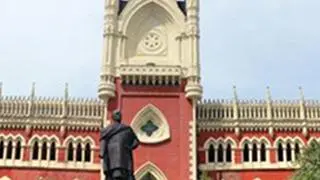Stressed hospitality companies under the insolvency process are finding it difficult to get new owners as properties degenerate and lose value during the course of long-drawn debt resolution proceedings. Nearly 30 per cent of hospitality stressed assets end up being liquidated as per the Insolvency and Bankruptcy Board of India (IBBI) data.
The provisions relating to Corporate Insolvency Resolution Process (CIRP) came into force on December 1, 2016. Since then, a total of 5,258 CIRPs have commenced by the end of March 2022. Out of these, 3 per cent of the companies dragged to the NCLT are hotels. Around 3,400 cases have achieved closure of which 47 per cent end up going through the liquidation process. Of this, about 2 per cent cases are from the hospitality industry.
Last resort
According to industry players and experts, NCLT remains the last resort for a resolution for the players and their lenders. The reasons, they said, are never-ending NCLT processes and the poor quality of the assets.
The formation of the NCLT in 2016 was a visionary step to bring fiscal prudence and quick resolution to assets that became NPAs or insolvent, said Akash Datta, Senior Vice President, HVS ANAROCK. However, according to him, the process of asset disposal under NCLT has not yielded the desired results as were envisaged and several hotels have not found timely resolution and are marred in procedural delays.
Nandivardhan Jain, CEO of Noesis, said NCLT is the last resort for the lender to recover its dues. Ideally, banks prefer to recover it through business cashflow. Hospitality industry has traditionally been an asset heavy industry. The chances of liquidation isn’t the only reason why industry players fret taking it to the NCLT.
Prior to Covid, Mahindra Holidays and Resorts was looking to acquire stressed assets in Kashmir. In a recent interview, when BusinessLine asked Kavinder Singh, Managing Director & CEO of the company, on his plans to acquire a hotel through an NCLT process, he said: “The hotels in the NCLT process are usually under-maintained and not up to the mark of the quality of the hotels that we would want. Most of the hotels are also usually with cookie cutter rooms, and do not match our requirements.”
Fall in valuation
In the majority of cases, assets that reach the NCLT platform usually have performance and maintenance issues along with operational challenges.
Jain of Noesis explained: “When unit profitability mismatches with bank monthly dues, then to keep the account regular, the owner starts cutting corners on operations, delay in statutory dues (causing penalties), and maintenance of assets is ignored. This ultimately started impacting on unit quality and operations, which eventually shows the impact on hotel profitability.”
This impact of the operations leads to a massive fall in the valuation of the asset, according to Saurabh Gupta MRICS, Managing Partner – Hotel Transactions Advisory HOTELiVATE. “The fall in valuation of a hotel from standard to stressed asset to NPA to NCLT is steep. The first three levels are when the hotel owner and the creditors can salvage significant value,” he added.
This is the reason why assets on the NCLT platform go on deep discounts, because investors need to invest substantially post acquisition of it and have to work on asset-positioning in the market, according to Jain.
The way forward
While there are multiple challenges in the NCLT process, Chander K Baljee, Chairman & Managing Director, Royal Orchid Hotels Limited, said NCLT is an opportune place to buy a hotel as the reserve prices are quite low there in comparison to open market.
On the other hand, Datta said the process itself is visionary, however, “The government needs to put in place a set of procedural amendments learning from the experience over the last six years to make the NCLT a more dynamic institution to resolve the current impasse.”
As an alternative to the NCLT process, at the right time, asset owners could recapitalise their assets in the best interest of the hotel, its employees and for themselves. Which means, before lenders take it to NCLT, owners need to dilute their stake in it fully or partially and work out the one-time restructuring plan with the bank.
As far as investors are concerned, a source explained: “With or without the NCLT process, the investors need to realise the value of the asset not only in the current state but also the magic they can work around with it in the future.”







Comments
Comments have to be in English, and in full sentences. They cannot be abusive or personal. Please abide by our community guidelines for posting your comments.
We have migrated to a new commenting platform. If you are already a registered user of TheHindu Businessline and logged in, you may continue to engage with our articles. If you do not have an account please register and login to post comments. Users can access their older comments by logging into their accounts on Vuukle.